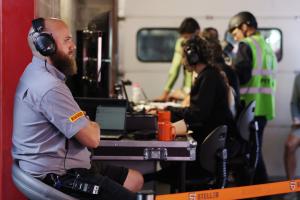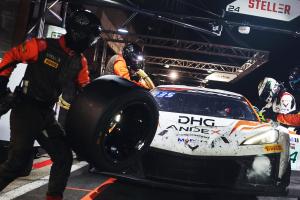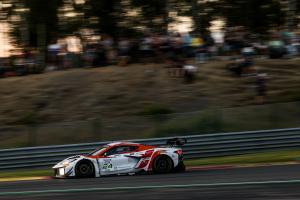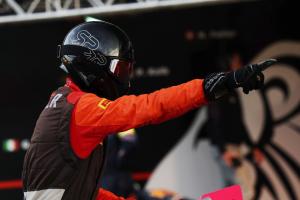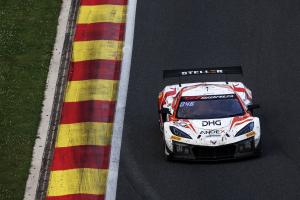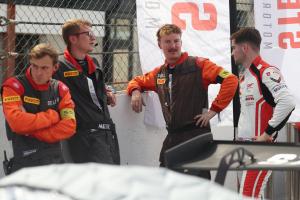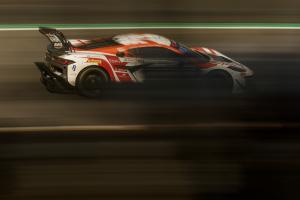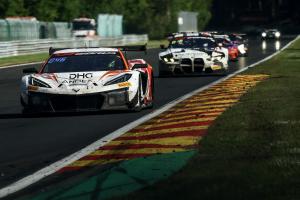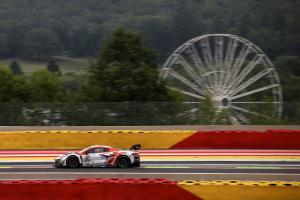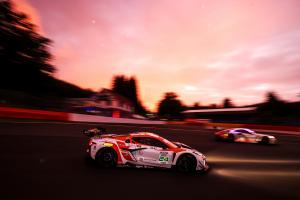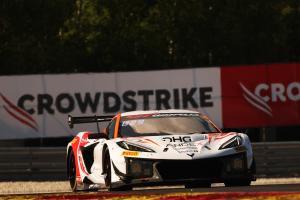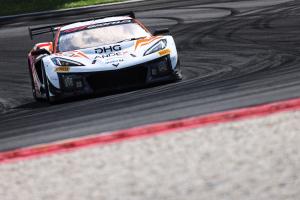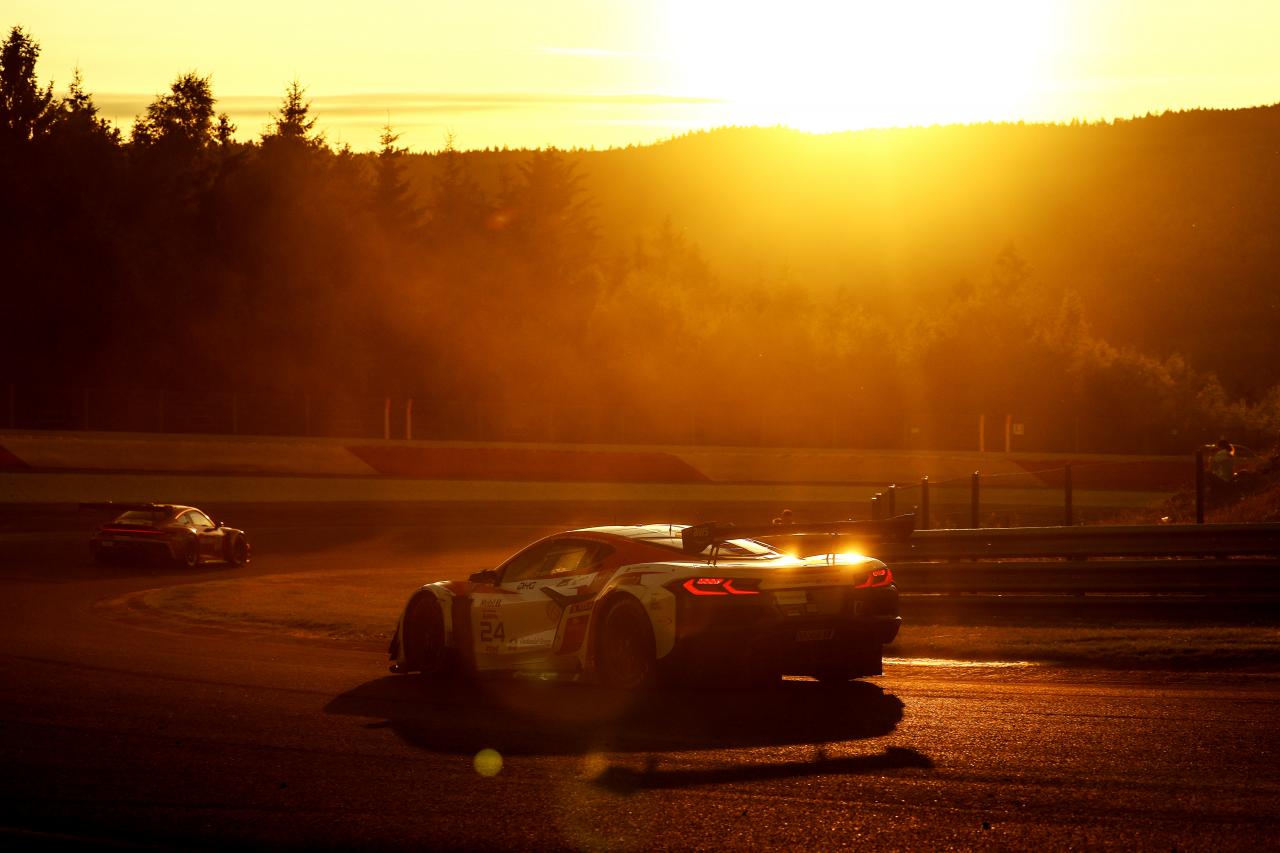
Making your debut at the CrowdStrike 24 Hours of Spa
Steller Motorsport made its CrowdStrike 24 Hours of Spa debut at the previous round of the GT World Challenge Europe Powered by AWS championship, and raced its Corvette Z06 GT3.R to eighth place in the silver class. With the dust now settled on the 2025 running of the iconic event, team manager Max Daymond reflects on taking on the challenge for the first time and the learnings that can be taken going forwards.
This was the team’s first CrowdStrike 24 Hours of Spa event - how high were everyone’s levels of anticipation ahead of the season, and then in the weeks running up to the event, as one of the biggest events on the GT racing calendar
We went into the race with a positive outlook but open eyes. Whilst it was the first 24-hour race for the team as a whole, a number of the crew have already completed multiple 24-hour races and knew what it takes to compete at the sharp end, which is no mean feat, especially on a grid as competitive as the CrowdStrike 24 Hours of Spa. Incredibly, we led the race overall for a short while early on which far surpassed our expectations, but we knew we still had a long way to go at that point.
During your time in motorsport, how does it compare to any other major races? What was the event feel and atmosphere like vs other endurance rounds? Did it feel special?
Spa itself is, and always will be, a special place to race at, but being there for the 24-hour race was another level. The effort and resources that manufacturers and teams put into this event is second to none, and feeling the ground shake and your eardrums vibrate as 74 GT3 cars hurtle towards Eau Rouge flat-out was an incredible experience. The event felt a lot like Le Mans in the way the paddock was put together, with huge team structures, hospitality units placed anywhere they would fit, live music and fireworks during the race: but it was certainly a level up from any other endurance race.
Technically, how did the team prepare and did you do anything different to other endurance rounds?
Ordinarily the car will be running for three or six hours during an endurance race, and afterwards you have the opportunity to check items for wear, but obviously no such luck in a 24-hour race. So anything on the car with a clear life cycle were either new or had a large margin on total mileage before the start of the race to ensure we didn’t suffer any mechanical failures, and the car was meticulously checked after warm-up to ensure the crew were happy. Whilst all of this is part of our normal procedures as a team, the factor of safety we implement is far greater to ensure we had the best possible chance of making it to the end.
Sounds obvious, but what are the challenges of a 24-hour race over and above other endurance races? Not just fatigue, but is there anything else that presents a significant challenge?
Fatigue is certainly the obvious one, but hydration and sustenance are equally as important. If the car gets called into the pits at the last minute the crew have to be ready to react, so they must eat in the garage, or at the data station for the engineering crew, and it has to be finger food so you can eat on the go. The other consideration is making sure the crew are well-fed but not ‘full’; if you suddenly have to start running around a car as quickly as possible in a busy pit lane carrying 20kg of wheel and tyre you don’t want to feel sluggish.
Were there any challenges that were unexpected?
We half-expected that getting tyres fitted throughout the race could pose a challenge – wheels have to be presented to Pirelli in a clean state so the air from the tyre and weights from the wheel have to be removed and it has to be washed, a process which can take five or 10 minutes per wheel when you’re fully-awake, let alone when you've been awake for an entire day already. Once they’ve been delivered to Pirelli and the next set of tyres is ordered, they enter the queue to be fitted, and finally you can collect them and bring them back to your garage where the weights are taped, the pressures are set and the tyres are allocated a set number. Doing all of this whilst looking after the set in the tyre oven and pressurising the next sets is the work of more than one person, and even then you are flat out to keep everything on time. One thing we actually didn’t plan for was the number of spectators around the Pirelli fitting area. Pirelli had around 140 staff members on site to help fit around 1,800 tyres during the race itself which was quite a spectacle and drew in the crowds which made life a little harder for the guys trying to collect.
How did the team rise to the challenges?
Teamwork! We implemented a policy of complete truth, honesty, and transparency, for all crew and drivers too. If you’re struggling through fatigue or otherwise, tell someone. It’s far better to give support where it’s needed and move forwards as a coherent unit, than struggle in silence and become a weak link, there’s no judgement in our team.
Does the team work in shifts, or do you just grab sleep when you can?
For the engineering staff and myself, we didn’t have the luxury of being able to sleep – we needed to be awake for the duration to keep the car running on track and support each other, and we did. For the rest of the crew, we set up a seating area in the garage and they could nod off when they needed to and played games or chatted when they wanted to stay awake. The important thing was everyone was on radio comms at all times and ready to go at a moment's notice, even if they needed a gentle nudge before the car entered the pit lane.
What went well for the team during the race?
Our strategy for the first half of the race was executed brilliantly, as were the pitstops where, despite having to repair damage, we managed to keep the time in the pits to a minimum whilst still allowing the car to continue the race without penalty. When we did suffer further damage the crew worked quickly and efficiently to minimise time loss and get the car back on the track.
Where did you struggle?
The biggest struggle was allowing the drivers to get as much rest as possible, whilst trying to remain flexible so we could react to the race as it unfolded. We set out a clear run plan before the start of the race so each driver knew when they were needed in the garage, but of course this was built on a perfect world, and with interventions and their impact on stint times, we began to deviate slightly from the original plan which was to be expected, but communicating that to a driver who is asleep in their motorhome or hotel room is not always easy.
Are there extra requirements in pitstops for a 24-hour race?
Yes, and the rules around how these must be carried out are strict. It was necessary for us (as it was for most other teams) to top up fluids throughout the race, which we practiced and executed well. All cars must also conduct a 'technical pitstop’ which must last a minimum of five minutes where we elected to change our front brakes; an operation that involves disconnecting and swapping the entire disc, pad, and calliper assembly when extremely hot. Aside from that, there’s the obvious damage repairs but thankfully these were relatively minimal for us.
How easy or hard was it setting up a car for four drivers and where do you make compromises?
Each driver has his own style and preferences, so there is always an element of compromise for all four drivers. Thankfully, our drivers all had similar styles which makes this easier, but still a challenge.
The weather - for once! - was dry at Spa, but if it had been changeable would you change set-up mid race for a change in conditions, or just tyres and otherwise race what you have?
That really depends on a lot of factors. Typically you’ll race what you’ve got and get on with it because the time loss is usually too great to offset, but if there is seriously heavy rain that will be sustained for a long period you have to try and weigh up the time loss of making the change versus the time you'll gain from improving the setup for the conditions – not an easy or an exact calculation but thankfully something we didn’t have to consider this time round.
Strategy wise, did you arrive with a plan and were you able to stick to it, or how flexible and adaptable do you have to be in a race like this? What specific examples were there of having to make calls on the fly and what decisions did you have to make?
We had a clear plan in place before the start of the race so we all had something to work towards, but we knew it would likely change as the race progressed. We had an engineer constantly working out stint times throughout the race because if there is a Safety Car or Full Course Yellow you lose a lot less time by pitting when the other cars are circulating at a reduced speed – but it’s not always necessary to pit just because you’ll lose less time; sometimes it’s better to gain track position if your tyres, fuel and driver are all in a good condition. Intervention on track also affects the maximum stint time each driver can achieve whilst in the car, so this too needs to be taken into consideration, alongside fuel level, tyre mileage, and overall pace.
What are the biggest learnings you have taken from the event, and what would you do differently next time
I have to say I was very pleased with our performance throughout the event. We put a lot into preparation before and during the event and I think it paid off with a car that finished strong and had no mechanical issues throughout. As others dropped out of the race due to accident damage or mechanical failure we kept going and treated every pitstop like it was the difference between winning and losing and I’m immensely proud of the entire crew for putting in 110% at all times. I would like a comfier chair next year though.
